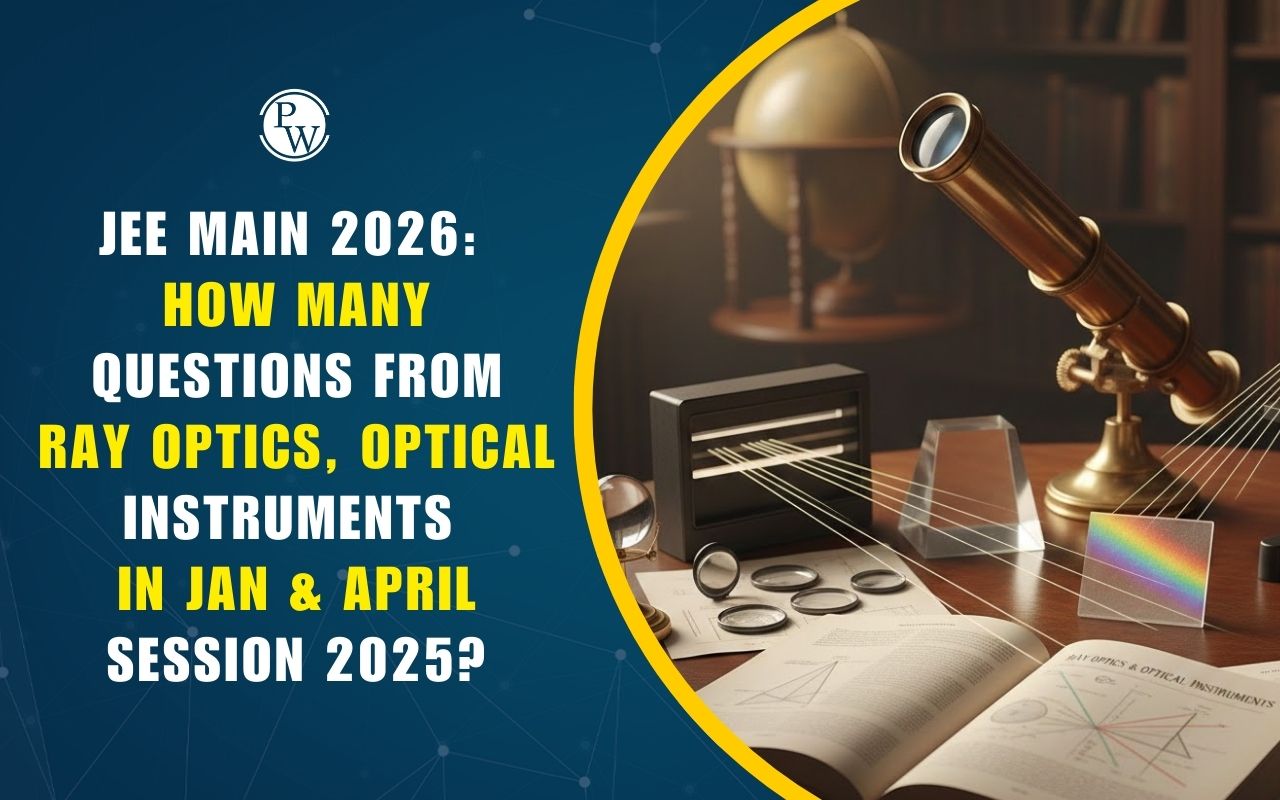
Quantum Numbers : Welcome, curious learners, to the intriguing world of quantum numbers! In this article, we'll embark on a journey to demystify the concept of quantum numbers and explore their role in describing the structure of atoms. Quantum numbers are essential in quantum mechanics, providing a framework for understanding the properties and behaviour of electrons within atoms. By the end of this adventure, you'll have a solid grasp of quantum numbers and their significance in atomic theory. So, let's dive in and unravel the mysteries together.
Before we delve into the specifics of quantum numbers, let's first grasp the concept of quantum mechanics. Quantum mechanics is the branch of physics that deals with the behaviour of particles on the atomic and subatomic scales. In the quantum world, particles such as electrons exhibit wave-like properties and are described by mathematical entities called wavefunctions.
What are Quantum Numbers?
Quantum numbers are a set of four numbers used to describe the unique properties and characteristics of electrons within atoms. They provide a way to specify the energy, shape, orientation, and spin of electrons in atomic orbitals. Each quantum number corresponds to a specific aspect of an electron's behaviour in an atom.
Principal Quantum Number (n):
Principal Quantum Number (n) : The principal quantum number (n) is the first quantum number and determines the energy level of an electron in an atom. It represents the size and overall energy of the orbital. Higher values of n correspond to higher energy levels and larger orbitals farther away from the nucleus.
Given By
Bohr
- It represents the name and energy of the shell to which electron belongs and size of orbit.
-
The value of n lies between 1 to
-
i.e., n = 1, 2, 3, 4 …
corresponding name of shells are K, L, M, N, O, …
- Greater the value of n, greater is the distance from the nucleus.
r 1 < r 2 < r 3 < r 4 < r 5 …
- Greater the value of n, greater is the energy of shell
E 1 < E 2 < E 3 < E 4 ………
-
Velocity of electron v = 2.18 × 10
6
m/s
V 1 > V 2 > V 3 ………
-
The angular momentum of a revolving electron is mvr =
Where n = Principal quantum number.
- The number of electrons in a particular shell is equal to 2n 2
Azimuthal quantum number/Angular quantum number/ Subsidiary quantum number (l)
The angular momentum quantum number (l) is the second quantum number and determines the shape of the orbital. It is also known as the azimuthal quantum number. The value of l ranges from 0 to (n – 1) and specifies the type of orbital (s, p, d, f) within a given energy level.- Given By - Sommerfeld
- It represents the name of the subshell, shape of orbital and orbital angular momentum.
- Possible values of ‘ l ’ are :
Subshell
Subshell
Subshell
Subshell
∙ Values of l lies between 0 to (n – 1) in a particular n th shell :-
Ex.
If n = 1 then
l
= 0
1s i.e., in n = 1 shell, only one subshell ‘s’ is present.
If n = 2 then
l
= 0, 1
2s, 2p i.e., in n = 2 shell, two subshells ‘s’ & ‘p’ are present.
If n = 3 then
l
= 0, 1, 2
3s, 3p, 3d i.e., in n = 3 shell, three subshells ‘s’ ‘p’ & ‘d’ are present.
If n = 4 then
l
= 0, 1, 2, 3
4s, 4p, 4d, 4f i.e., in n = 4 shell, four subshells ‘s’ ‘p’ ‘d’ & ‘f’ are present.
∙ If the value of n is same then the order of energy of the various subshells will be s < p < d < f [valid only for multi-electron species]
Ex. 4s < 4p < 4d < 4f, 3s < 3p < 3d, 2s < 2p
∙ If value of l is same but value of n is different then the order of energy will be
Ex. 1s < 2s < 3s < 4s < 5s < 6s
3d < 4d < 5d < 6d
4p < 5p < 6p
Magnetic Quantum Number (m)
Magnetic Quantum Number (m) : The magnetic quantum number (m) is the third quantum number and determines the orbital orientation in space. It specifies the number of orbitals within a subshell and ranges from -l to +l, including zero. Each value of l corresponds to a different orientation of the orbital.
- Given by Linde
- It represents the orientation of electron cloud (orbital)
- Under the influence of magnetic field each subshell is further subdivided into orbitals (The electron cloud is known as orbital)
- Magnetic quantum number describe these different distributions of electrons cloud.
- Values of m = all integral value from – l to + l including zero.
i.e., Value of m = – l to + l
Spin Quantum Number (s)
Spin Quantum Number (s) : The spin quantum number (s) is the fourth quantum number and describes the intrinsic spin of an electron. It can have two possible values: +1/2 (spin-up) or -1/2 (spin-down). The spin quantum number distinguishes between the two possible spin states of an electron.
- Given by Goudsmit and Unlenbeck
- It represents the direction of electron spin around its own axis
-
For anti-clockwise spin/spin up (
) electron
1/2
-
For anti-clockwise spin/spin down (
) electron
1/2
Spin angular momentum of an electron
Each orbital can accomodate 2 electron with opposite spin or spin paired.
Correct
spin paired e
–
Wrong
spin parallel e
–
Important Points To Remember
-
The orbital angular momentum =
(
is called as ‘hash’)
Orbital angular momentum: For s subshell = 0
For
p
subshell =
- The number of electrons in a particular subshell is equal to 2(2 l + 1)
For s subshell number of electrons = 2e –
For p subshell number of electrons = 6e –
For d subshell number of electrons = 10e –
For f subshell number of electrons = 14e –
- Shape of the orbital;
Spin Multiplcity
It is given by 2S + 1 where S is the total spin.
(a)
(b)
For (a),
Spin multiplicity = 2S + 1 = 0 + 1 = 1 (singlet)
For (b),
Spin multiplicity = 2S + 1 = 2 × 1 + 1 = 3 (triplet)
Solved Example Of Quantum Numbers
1. The total number of electron in Cu for which l – m = 1?
Sol.
Hence, total number of electrons in Cu for l – m = 1 will be: 6 electrons
2. If l = 0 to n + 1, then number of subshells, orbitals and electrons in 3 rd shell will be?
Sol. l = 0 to n + 1
K = 1
0, 1, 2
1s
1p
1d
L = 2
0, 1, 2, 3
2s
2p
2d
2f
M = 3
0, 1, 2, 3, 4
3s
3p
3d
3f
3g
Subshells = 5
Orbitals = 25
Electrons = 50
3. Write down the four quantum numbers for fifth and sixth electrons of carbon atom.
Sol. 6 C = 1s 2 , 2s 2 2p 2
Fifth electron : n = 2
l
= 1
m = –1 or +1
Sixth electron : n = 2
l
= 1
m = 0
4. Calculate total spin, magnetic moment for the atoms having atomic number 7, 24 and 36.
Sol. The electronic configuration are
7 N : 1s 2 , 2s 2 2p 3 unpaired electron = 3
24 Cr : 1s 2 , 2s 2 2p 6 , 3s 2 3p 6 3d 5 , 4s 1 unpaired electron = 6
36 Kr : 1s 2 , 2s 2 2p 6 , 3s 2 3p 6 3d 10 , 4s 2 , 4p 6 unpaired electron = 0
Total spin for an atom =
1/2 × number of unpaired electron
For
7
N, it is =
3/2; For
24
Cr, it is =
3; For
36
Kr, it is = 0
Also magnetic moment =
For
7
N, it is =
For
24
Cr, it is =
; For
36
Kr, it is =
Significance of Quantum Numbers
Significance of Quantum Numbers : Quantum numbers play a crucial role in describing the structure of atoms and predicting the behaviour of electrons within them. They provide a way to uniquely identify and characterize each electron in an atom, allowing scientists to understand and model the complex interactions that occur in atomic systems.
Quantum Numbers FAQs
Q.1 : What are quantum numbers, and why are they important in atomic theory?
Q.2 : How do quantum numbers help determine the electronic configuration of atoms?
Q.3 : What is the significance of the principal quantum number (n) in quantum mechanics?
Q. 4 : How does the angular momentum quantum number (l) affect the shape of atomic orbitals?
Q.5 : What is the role of the magnetic quantum number (m) in describing the orientation of atomic orbitals?
Q.6 : How does the spin quantum number (s) contribute to the magnetic properties of atoms?










